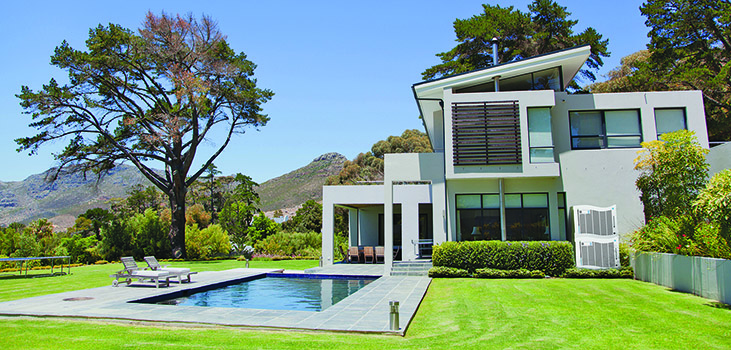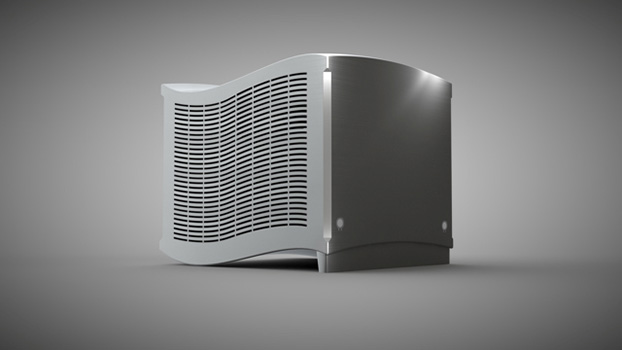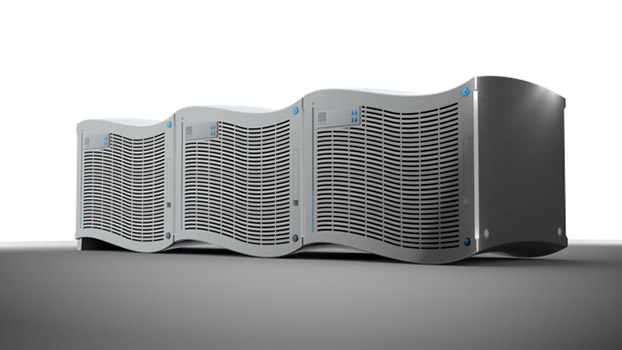What is standing in the way of SunToWater's ability to put its already-proven technology to use in homes and businesses is the capital needed to manufacture enough units to meet the expected demand-a few million dollars, to be exact.

The residential market is SunToWater’s primary focus at present, as the company envisions its technology allowing homeowners to go further “off the grid” by generating their own pure water from the air.
By Bill Picture
Published: January, 2016
What if someone told you that a possible solution to California’s ongoing water shortage is literally floating right above your head? That’s what one California company is proposing. San Carlos-based SunToWater is making available to the general public green technology that extracts water from thin air for use in homes and businesses.
The company’s water-generation appliance, which builds on technology first developed a few years ago by Flextronics, recently won first prize in Singularity University’s 2015 Impact Challenge, and earlier in 2015 took first place at the Silicon Valley Founder Showcase. The appliance will be available for sale beginning later this month, and company executives expect orders to be fulfilled by the end of the year.
Extracting water from the air is hardly a new idea; dehumidifiers have been available in stores for years. But dehumidifiers don’t generate drinking-quality water. They also use quite a bit of electricity, relying on decades-old refrigeration technology to condense water.
SunToWater’s technology uses a non-toxic salt to absorb the water in the air. Heat generated by solar collectors then bakes the water out of the salt, and the vapor naturally condenses when exposed to cooler outside air. The result is distilled water, which can be used as-is to irrigate crops, further purified to make ultra-pure medical-grade water or re-mineralized to make potable water for household and commercial use.
“Our units use 70 percent less power than refrigerant-based units,” said SunToWater CEO Benjamin Blumenthal, who also said that the company’s first priority in developing the technology was to offer an environmentally-safe product. “The entire process is completely natural and organic. That was very important to us.”
So what does Blumenthal say to people worried that SunToWater may be creating a new environmental woe by sucking our atmosphere dry? “There are 2.9 trillion tons of water in our atmosphere—literally an ocean above us,” he explained. “Even if every person had one of our units and ran it at full capacity, we would lose less water in a day than we lose from the sun beating down on the Atlantic Ocean.”
Cutting out the middle man
Enabling every household and business in California to generate its own water could ease the strain on the state’s already-stretched water supply. It could also allow consumers who currently purchase water to cut another tie to municipal utilities, the same way that solar power has allowed households and businesses to take themselves off the grid. “It’s an intentional fragmentation of today’s water supply market,” Blumenthal said. “And I think that’s a good and healthy thing.”
Blumenthal said a single unit, which is about the size of an air conditioner and will retail for about $9,000, is capable of generating between 40 and 100 gallons of water each day; and the applications are endless. Besides having a reliable source of good-quality drinking water at your fingertips, the technology could also allow you to water your lawn whenever you want without fear of being ticketed by the water police, or to your swimming pool without guilt.
Blumenthal also pointed out that being able to generate your own water could also provide life-saving benefits in an emergency. “A big earthquake could disrupt water service for days or even weeks,” he said. “And now in this age of terrorism, there’s the potential of a threat to our water supply. Having one of these units would ensure you have access at all times to water that you trust.”
Naturally, the life-saving abilities of SunToWater’s water-generating appliance would be significantly increased in countries whose residents have either limited or no access to clean water. In more remote areas, where clean water has to be trucked in, an investment in a SunToWater unit would also help mitigate the air pollution resulting from big trucks.
“This is major,” Blumenthal said. “There’s this big problem—a lock, if you will. And we have the key.”
The residential market is SunToWater’s primary focus at present, but the company’s technology also holds promise for those members of the commercial sector whose success requires access to above-average amounts of water. “Coca-Cola, for instance, needs a lot of water; the oil and gas industries as well,” Blumenthal added.
More than just a pat on the back
What is standing in the way of SunToWater’s ability to put its already-proven technology to use in homes and businesses is the capital needed to manufacture enough units to meet the expected demand—a few million dollars, to be exact.
Blumenthal hopes having two major awards under its belt will make it easier for SunToWater to raise the money it needs. The company was one of a hundred applicants vying for top honors in the Impact Challenge, whose host Singularity University helps promote technology like SunToWater’s in an effort to find solutions to some of humanity’s largest challenges. The competition was cohosted by Lieutenant Governor Gavin Newsom, a proven leader in all things green.
“Winning the Founder Showcase and the Impact Challenge says our technology is the absolute best out there,” said Blumenthal. “We’re very proud of that, of course; but we’re also hoping it’ll encourage the support of investors.”
“Without question, we’ve got a great thing to offer,” he added. “Now it’s just a matter of getting that technology out there into the world where it’s needed.”
For more information, visit www.suntowater.com.

SunToWater’s units are about the size of an air conditioner and will retail for about $9,000.

SunToWater’s units can be daisy-chained together for more water-intensive uses such as business and agriculture.

